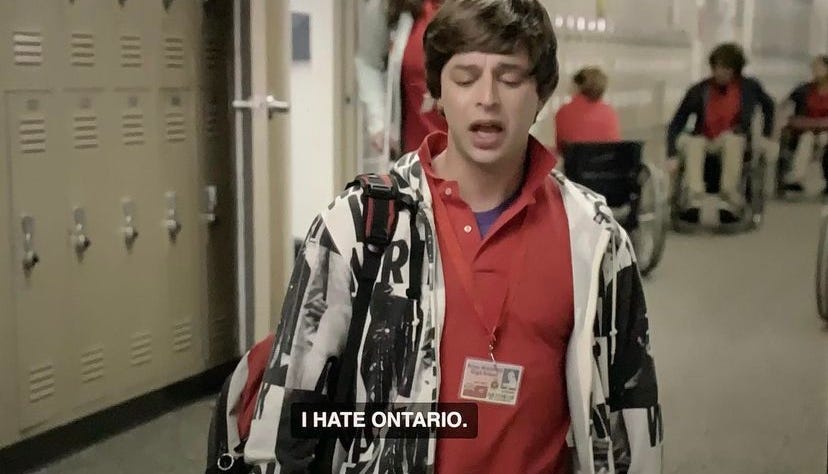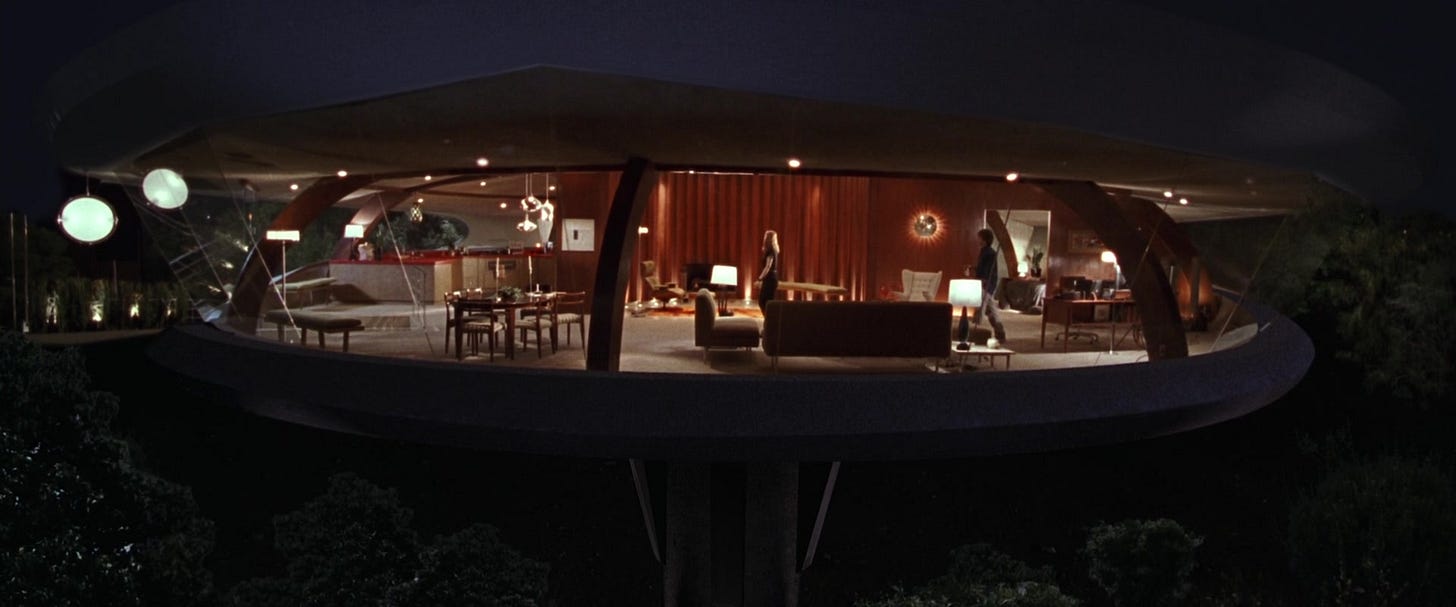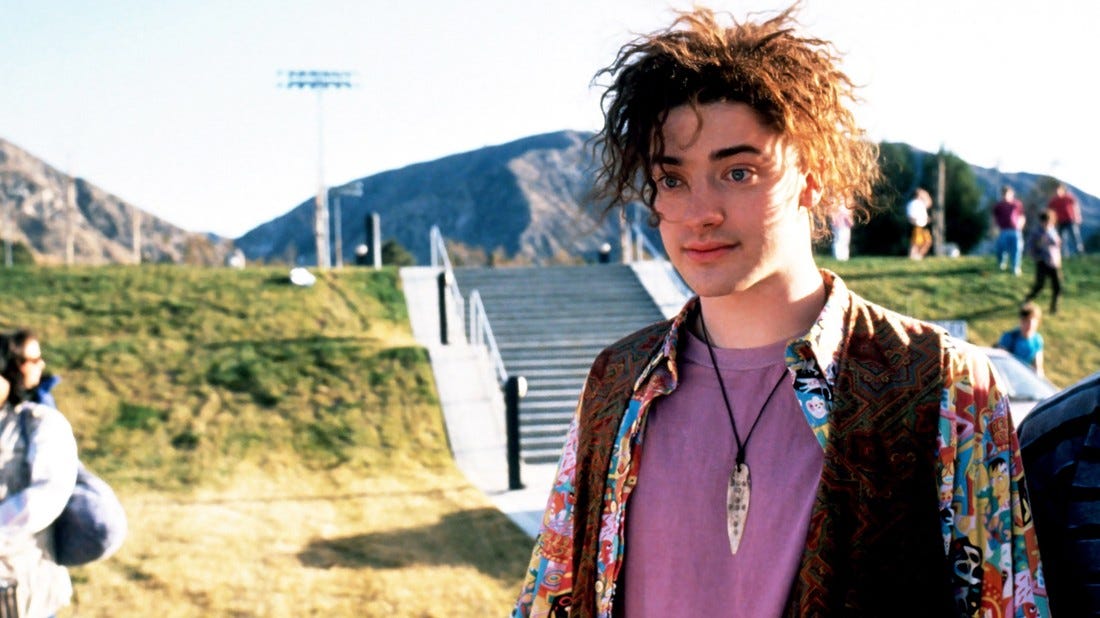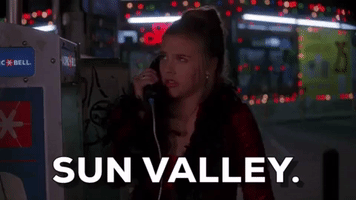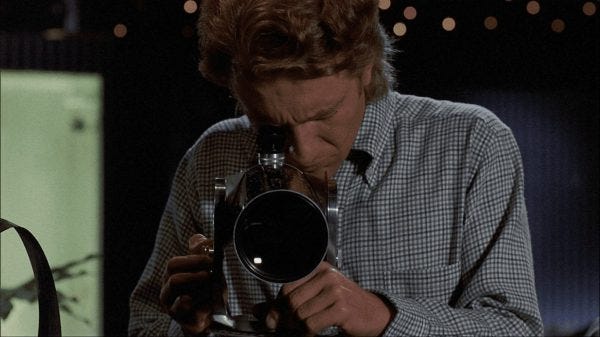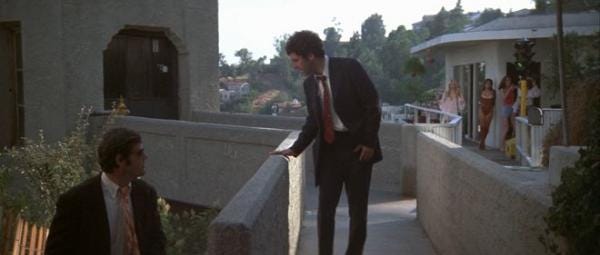My old Toronto neighbourhood was always primed for filming. I’d get a notice on the door that half the street was closed for a few days. Occasionally, a local cafe or diner was overrun by a production crew. Sometimes I’d walk to work and find the entrance to an MTA station in the middle of the sidewalk. I’ve been stopped, in the dead of winter, from boarding a streetcar because I was in someone’s shot. As much as this happens, no one comes to Toronto to shoot Toronto; the city is always dressed up as somewhere else. It can become anywhere else but here.
When I approached Hagop Kourounian (aka @directorfits) for this interview, he brought up landmarks. An LA native, he grew up watching films shot near his high school or childhood home. We talked about spots like the Chemosphere, an architectural marvel that first appeared in an episode of The Outer Limits (“The Duplicate Man”) before Brian De Palma’s Body Double. It even inspired the look of Eric Knox’s home in Charlie’s Angels (2000). What was once a home built for two wealthy newlyweds is now a destination for architecture and Letterboxd devotees.
To Kourounian, most of his favourite LA landmarks are only preserved in these films. Like everywhere else, everything is collapsing, and these spots are either being torn down or neglected to ruins. This is how he remembers them.
How long have you lived in LA?
I’ve lived here my whole life. My family is spread out across LA, so I’ve been in almost every pocket. I wouldn’t call myself an LA expert, but I would say I’m a good representative of the city.
Enough to spot a filming location?
When Seinfeld came to LA, they filmed on location, and I know exactly where in most of the scenes. The exteriors were 100% right outside of CBS Studios, which is two streets away from me. The Seinfeld scene I’m referring to is when Jerry and George are looking for Kramer in LA. They hop on a payphone to figure out where they are because Kramer is wanted for murder. That payphone is one block outside of the CBS Studios lot.
No one in my family is related to the entertainment industry. We’re Armenians who came from Lebanon in the 90s. They didn’t know shit about the industry — other than the tv shows they watched. My family had no idea how it was all made or that it was being filmed blocks away from where they lived. When I was a kid, I didn't understand that either. Then I watched Encino Man, and we lived in Encino, and I thought it was normal.
What was normal?
That there was a movie with big stars about a specific neighbourhood that I lived in. I would see it all the time. I noticed so many locations when I was a kid and it made me feel like I was part of the movie. The whole city can feel like a working movie set at all times and you’ll run into one at some point. If you live in an apartment building with a lot of units, there’s a good chance that once a month, you’ll get a notice on your door saying they’re shooting exteriors for the week. And they’ll make you sign a release in case you’re on your balcony and in a shot. My friend’s dad is on an episode of Two and a Half Men because he was smoking a cigarette on his balcony.
It’s happening in Toronto but in most cases, it’s cast as somewhere else. It’s a blank slate, especially with all the condo developments.
LA is changing because of developers too. So much of Sunset Boulevard that shows up in Model Shop, for example, is gone already. Whatever is being torn down is being replaced with cookie-cutter apartment buildings that don't look special. We’re losing so much character from the city and it feels less localized. I don’t know how that translates to film, but I see that cookie-cutter architecture used in shows as a joke. If they want to portray a douchey influencer, they’ll use that. But longevity-wise – how long can we keep making that joke? I think about that one apartment in The Long Goodbye. It’s so iconic. And nothing like that would be built today.
We have this other problem with movie theatres being shut down. If you go to the Art Deco side of downtown, those buildings are from the 20s and 30s. The only one that's open is the United Artists Theatre, which was founded by Charlie Chaplin. Around it are similar theaters that have now closed. Quentin Tarantino owns two in LA1. I’m so surprised that other filmmakers aren’t doing the same. They spotlight these places that make people want to go there, right? It all sells this dream and now it’s getting torn down. The movies I love are the only things preserving these landmarks.
I’m surprised Paul Thomas Anderson isn’t doing something. He's a Valley kid and he reps it so much. The opening shot of Boogie Nights shows the marquee of the Reseda Theatre. I've looked up pictures of it when it was open in its heyday. It's beautiful and I’ve passed it a million times because my high school was next door. The marquee is still there, but the theatre is abandoned and rundown.
Is this what you notice when revisiting these older films?
I’m drawn to great representations of LA, especially if they are linked to my childhood. I remember Get Shorty fondly, specifically Gene Hackman’s office: There's a scene where they're filming the exterior and show you an Angelyne billboard up top.
When I was eight, I learned about Angelyne from my uncle, who introduced me to her at a Coffee Bean in LA. (He had spotted her pink Corvette outside.) As a kid, I was obsessed with her because she was so cool. I’m still obsessed with her: I have two posters of her and a Virgin Mary-type candle, that says: St. Angelyne, Patron Saint of LA.
When we were emailing, you mentioned that American Gigolo shows one of the most classic LA traditions. What is it?
Taking a weekend trip to Palm Springs. I've done that drive with my family in a crappy Mercedes that was somehow a convertible. I do that drive myself now – windows down, arm leaning against the door, stone cold. I love Paul Schrader and the soundtrack – it connects me to it. Many visual cues and details are coming at you and they demonstrate authenticity. I don’t think that drive to LA was in the script, but I’m sure when Paul Schrader was working on it, he was like, what road trip would an LA person do? It’s either Vegas or Palm Springs. It’s a character trait. It makes him an authentic Angelino.
In Get Shorty and Entourage, restaurant choices depict authenticity too, like going to The Ivy on Robertson, a classic Hollywood agent/power lunch. In Once Upon a Time in Hollywood, they go to the 60s version of that, Musso & Frank’s.
Have you ever watched Body Double?
I don’t know what the hell was wrong with my dad, but he showed that to me and my brother when we were young. I don't know why. But it’s burned in my mind. And now it’s a comfort watch for me. Body Double is interesting because, like other movies based here, it’s turned LA spots into landmarks. There’s John Lautner’s Chemosphere.
The reason why it’s there is crazy. The son of this rich chemical manufacturer got engaged and got this huge gift from his dad as a wedding gift – an empty lot – and he wanted John Lautner to build a crazy house on it for him. The lot was mostly a mountain and Lautner said it was impossible to build anything on it. He had to put in this cylinder-like structure to hold the house in the air instead.
Where else have you spotted the Chemosphere?
In The Simpsons. Troy McClure – who does those cheesy documentaries in the show – starts dating Marge’s sister and his house is the Chemosphere.
What makes a movie or landmark iconic? Can anything have staying power today?
I watch movies for external interests like cars, clothes, music, whatever, and those elements can make a movie or some part of it iconic. But I keep thinking about those cookie-cutter buildings we were talking about earlier. If you film and leave them in, they won’t connect to a real audience anymore.
The Chemosphere has this crazy following outside of film because it's an architectural marvel. The person who built it was part of Case Study and the Mid-century crew. My brother studies architecture and he and his friends will nerd out about this building, but they don’t give a shit about Body Double. For something to be iconic, it needs to land or connect with an audience outside of the industry too. Landmarks can have a cult following and relevancy outside of film, and that's why they're being used as locations. They're weird and interesting, and tell us a lot about a character.
Revisit an old interview with AndAfterThat.





